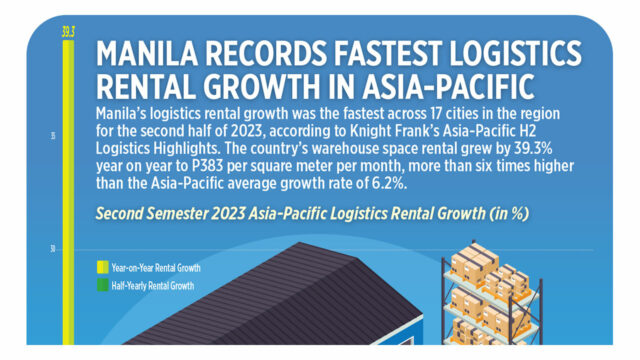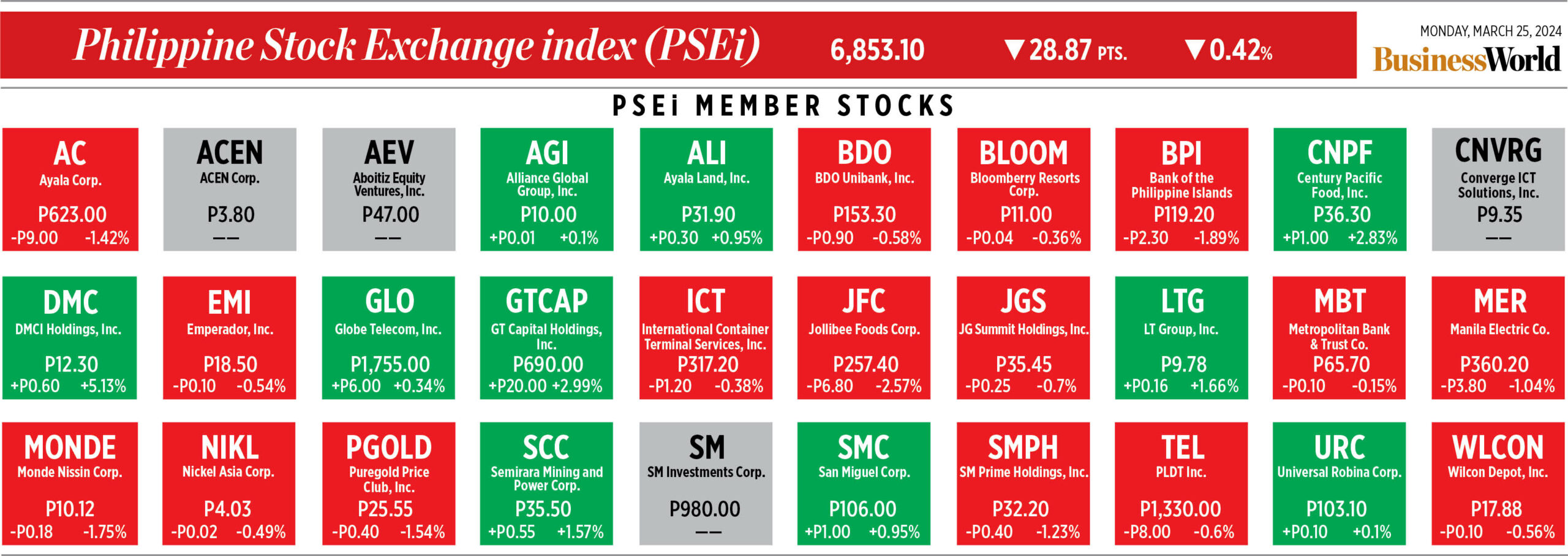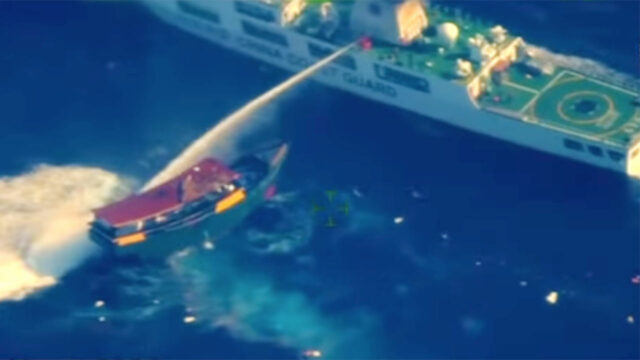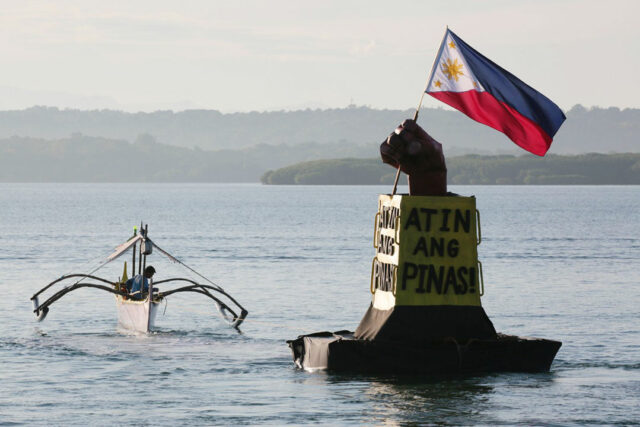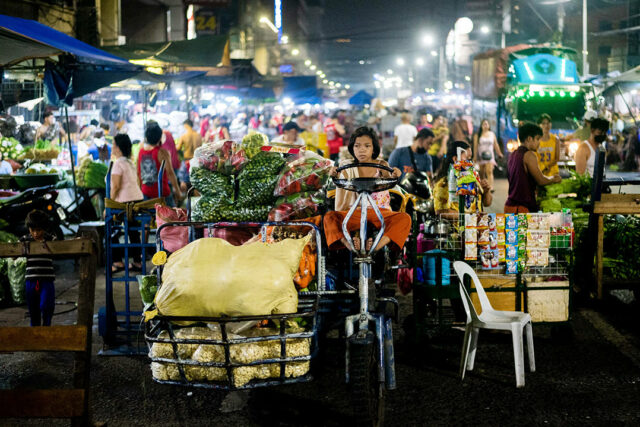THE PHILIPPINES on Monday summoned China’s envoy in Manila to protest “aggressive actions” in the South China Sea at the weekend, when its coast guard fired a water cannon at a resupply mission to Second Thomas Shoal.
In a statement, the Department of Foreign Affairs (DFA) also said it had ordered the Philippine Embassy in Beijing to lodge the same protest with the Chinese Ministry of Foreign Affairs.
“China’s continued interference with the Philippines’ routine and lawful activities in its own exclusive economic zone (EEZ) is unacceptable,” it said in a statement. “It infringes upon the Philippines’ sovereign rights and jurisdiction.”
Tensions between the two countries have worsened in the past year as China’s coast guard continues to block Philippine resupply missions to Second Thomas Shoal, where a handful of soldiers live in a dilapidated World War II-era ship that Manila grounded there in 1999 to assert its sovereignty.
In a separate statement, the DFA said Foreign Affairs Undersecretary Ma. Theresa P. Lazaro had spoken with Chinese Vice Foreign Minister Chen Xiaodong to protest the Chinese Coast Guard’s use of water cannons.
The Philippines has filed 147 diplomatic protests under the Marcos administration, 14 in all this year, over China’s incursions in the South China Sea, Foreign Affairs spokesperson Ma. Teresita C. Daza told reporters in a WhatsApp message.
The Chinese Embassy in Manila said it had lodged its side on the incident with its Philippine counterpart, saying the resupply vessels had trespassed into Chinese territory.
“China urges the Philippines to immediately stop infringement and provocation and return to the right track of dialogue and consultation in real earnest to find a proper way to manage the situation so as to jointly preserve the peace and stability in the South China Sea,” it said in a statement.
Philippine security officials met on Monday to discuss Saturday’s sea incident and prepare recommendations to President Ferdinand R. Marcos, Jr.
China claims the South China almost in its entirety. Second Thomas Shoal is about 200 kilometers from the Philippine island of Palawan and more than 1,000 kilometers from China’s nearest major landmass, Hainan Island.
Its coast guard on Saturday again fired a water cannon at a wooden boat used by the Philippines to deliver food and other supplies to BRP Sierra Madre, the grounded ship.
The United States condemned China’s “dangerous actions,” with US Department of State spokesman Matthew Miller saying these are destabilizing to the region and show clear disregard for international law.
‘UNLAWFUL MARITIME CLAIMS’
On Monday, the Japanese Embassy in Manila said it was concerned about repeated actions that obstruct freedom of navigation and increase regional tensions at sea.
“Japan believes that the issue concerning the South China Sea is directly related to the peace and stability of the region and is a legitimate concern of the international community,” it said.
“The government of Japan opposes unlawful maritime claims, militarization, coercive activities and threat or use of force in the South China Sea,” it added.
Japan would continue to cooperate with the international community including member-states of the Association of Southeast Asian Nations and the United States “to protect the free and open international order based on the rule of law.”
The envoys of Canada, Australia, Germany and the European Union had also expressed concern over the Chinese ships’ actions that they said were dangerous.
China’s coast guard accused the Philippines of transporting construction materials to the “illegally grounded” warship.
The Philippines has made sincere efforts to implement the instruction of President Marcos and Chinese President Xi Jinping to lower tensions, the DFA said.
“China’s aggressive actions call into question its sincerity in lowering the tensions and promoting peace,” it added.
It urged China to “take the correct track of abiding by international law and respecting the legitimate rights of other states like the Philippines, and to cease and desist from its continued violation of international law.”
Philippine Defense Secretary Gilberto C. Teodoro, Jr. dared China to state its sea claims through another arbitration.
“If China is not afraid to state its claims to the world, then why don’t we arbitrate under international law?” he told a news briefing. “No country believes (their claims) and they see this as their way to use force, intimidate and bend the Philippines to their ambitions.”
The water cannon incident came days after US Secretary of State Antony Blinken said during his visit to Manila that the US stands by its “ironclad” commitments to defend the Philippines against an armed attack in the South China Sea.
“These waterways are critical to the Philippines, to its security, to its economy, but they’re also critical to the interests of the region, the United States and the world,” he said at a joint press conference in Manila with his Philippine counterpart.
A United Nations-backed tribunal based in the Hague in 2016 voided China’s claim to more than 80% of the South China Sea for being illegal. — Norman P. Aquino and John Victor D. Ordoñez



